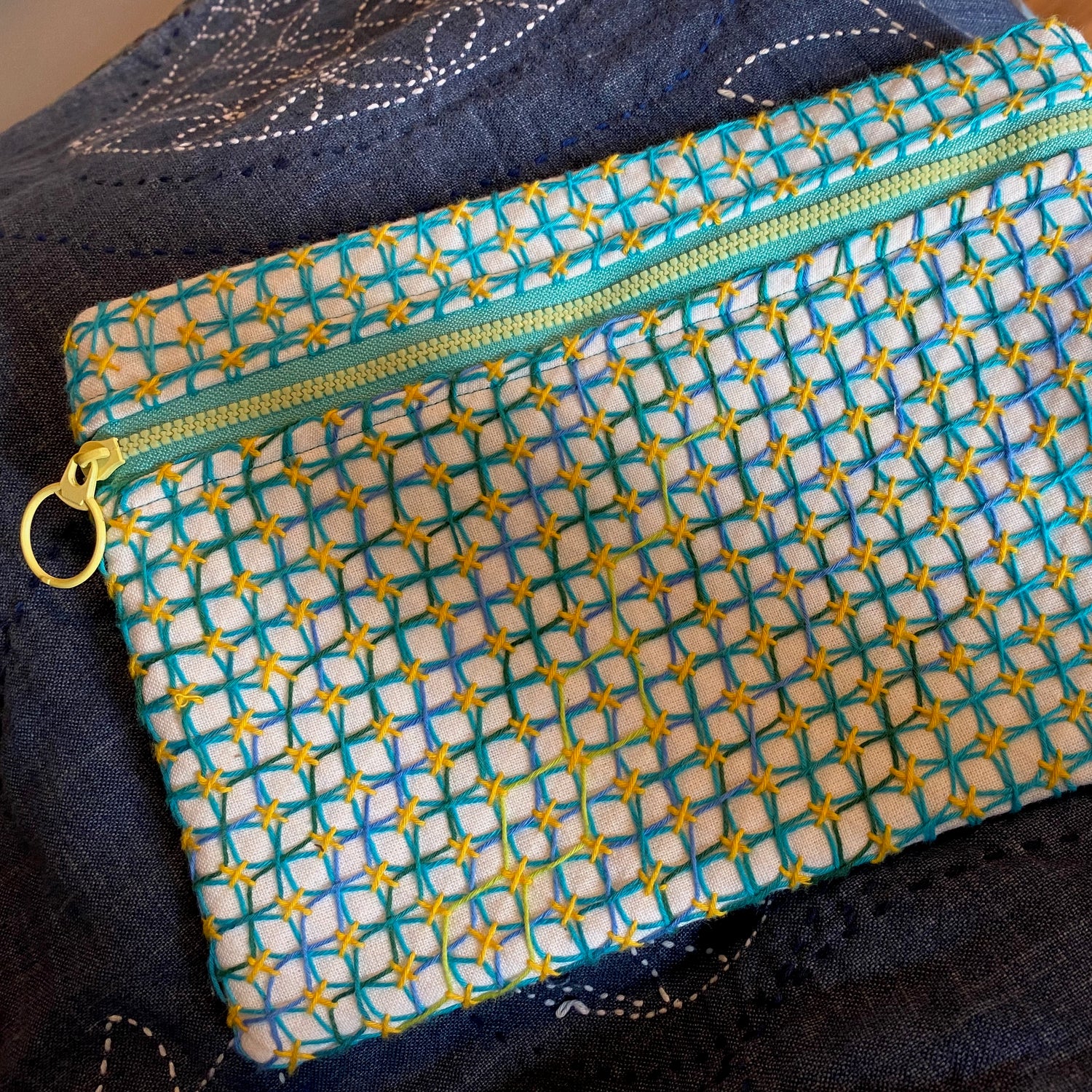
How to stitch the Asagao sampler (Kugurizashi Sashiko Style)

What you will need: the pre-printed fabric sampler, sashiko thread and sashiko needles
What is Kugurizashi Sashiko?
Kuguri sashiko is a two step sashiko stitching style. First you stitch a hitomezashi (one stitch) sashiko design and then you weave under those threads to create a kugurisashi sashiko design.
Hitomezashi designs are made up of single stitches in straight lines across the fabric. The stitching covers the fabric much more densely than the Moyozashi Sashiko (large sashiko designs used more for 'quilting' layers of fabric together).
Kugurizashi is a more advanced two part sashiko stitching technique which involves using the Hitomezashi stitching as the base layer to weave threads under to create beautiful patterns and textures.

Okay, let's stitch Asagao
You begin the stitching by stitching all the diagonal lines from left to right (or right to left- it doesn't matter, just be sure to stitch each line all the way across the fabric each time)


- Start by bringing your needle to the front of the fabric at a small dot.
- Weave through the Xs for the entire row, then push your needle back through the fabric at the dot at the end of the row.
- Bring your needle back to the front very close to where you put it through to the back.

Weave back down the row then move the the next row by coming back to the surface at the next dot.

Here is this step finished:

Here is what the back looks like:

Next we start the last step, which is actually the same as the last one but stitching on the opposite diagonal.
Still using the eye end of your needle, weave the line passing under the X's.

The threads are a bit loose at this stage, and they should be, so resist the urge to want to make them all snug. It will tighten up as more lines are woven.

Continue back down

Here are samples of the design stitched in two colours and three colors. The blue and yellow one has been finished and washed, so the threads have snugged up in the fabric nicely..



